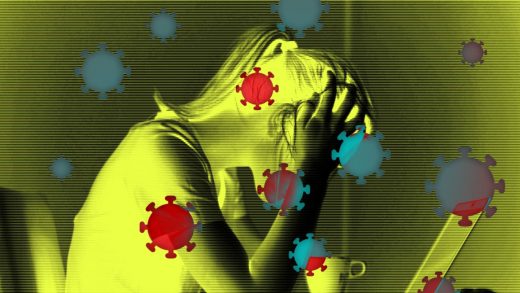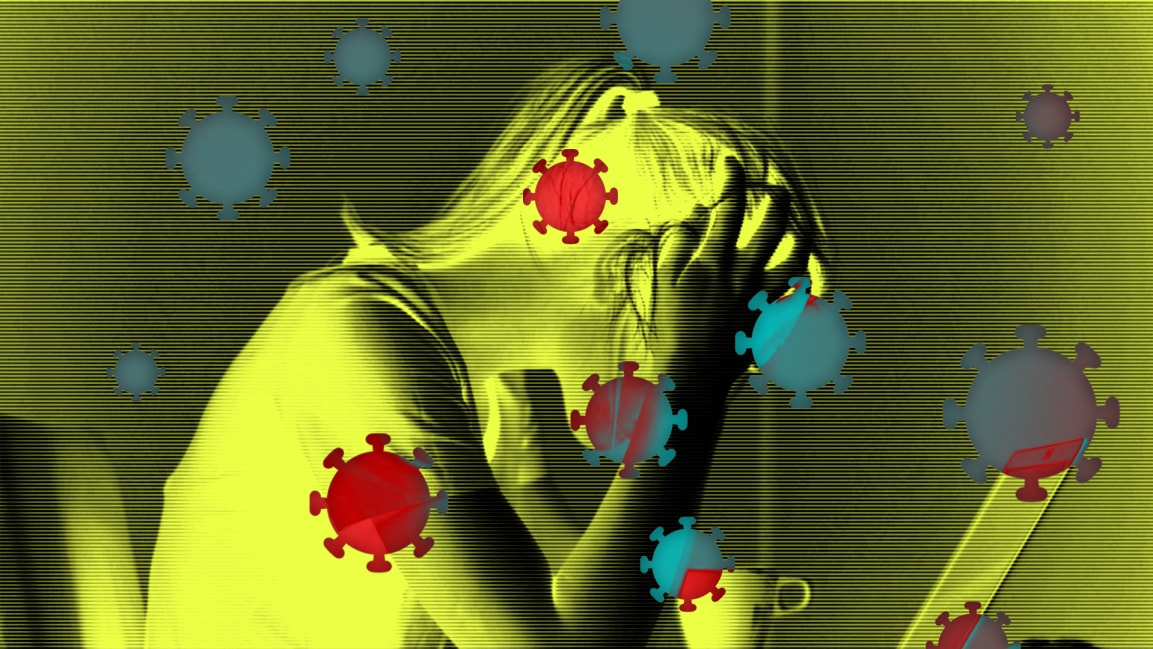‘I can’t handle it anymore’: COVID fatigue is winning at the worst possible moment
December 15, 2020
When COVID-19 first began, Jim Pasant didn’t wear just a mask and gloves, but also goggles, plus he’d repeatedly disinfect his own car—steering wheel, door handle, etc.—even though he was the only person who was ever in it. As the pandemic wore on, the 49-year-old Dallas artist stopped everything but wearing a mask.
“I’m not hand washing, not wiping every surface down, I’m going out a little more than I have been,” he says, though the COVID resurgence has made him rethink his actions. “I was hyper vigilant. I was trying to keep everything sterile. Today, I don’t wear gloves. I occasionally use hand sanitizer.”
Then, Pasant began to attend outdoor dinner parties with not more than 10 people. And in October, he did something he never would’ve back in April; he traveled to the U.S. Virgin Islands for a vacation via two connecting flights each way via Atlanta.
What’s been dubbed COVID fatigue is manifesting itself in an alarming number of people shrugging off safety measures and consuming less news about the pandemic, according to a new Harris Poll conducted exclusively for Fast Company.
Twenty-seven percent of Americans say they’re less likely to engage in certain safety precautions than they were six months ago, curtailing things like frequent handwashing, wearing masks in public, and social distancing. The reasons why run the gamut, with some survey respondents (43%) saying they’ve come to terms with the fact that the pandemic isn’t ending soon. Another 27% cited the imminent availability of a vaccine as their reason for being more lax, while 23% said they’d rather just live their life and take their chances.
News overload
Americans are also showing a decreased appetite for news coverage about the pandemic. Close to one-fifth of Americans are consuming less COVID-related news than they were six months ago. (The Harris Poll finds that 89% of Americans are keeping up with pandemic news at least once a week and 63% report media check-in at least once daily.)
“The mentality of getting on plane was ‘I can’t handle it anymore. I’ll roll the dice,’” Pasant says.
That betting—in this case with your life or at least your health—is what’s making people adopt a to-hell-with-it attitude. Remember the days when people let deliveries sit out on their front porches for a few days before bringing them inside? The endless slog that is this pandemic makes it hard to maintain the same high level of alertness; as the one-year mark approaches, hand sanitizer is replaced with hand shakes, social distancing with socializing.
People had lot of energy at the beginning because they thought, ‘If I do all those things, this will go away faster and our lives will go back to normal.’”
Rachel Dubrow, therapist
“We weren’t assuming we’d all be wearing masks for last nine months, so people had lot of energy at the beginning, because they thought, ‘If I do all those things, this will go away faster and our lives will go back to normal,’” explains Rachel Dubrow, a therapist in Northfield, Illinois, who specializes in anxiety, depression, and stress management. “They weren’t expecting this is where we’d be in December 2020. We don’t have anything worth working towards. You have people who don’t want to adjust to this anymore, so you have your super-spreader events. The craze is over.”
Rebel without a mask
Ditching safety measures comes from either a sense of rebellion or a false sense of security, which often stems from someone testing the limits—say, by not wearing a mask or by attending a large party—and then not getting COVID. When individuals break rules a bit and get away with it, they’re more likely to adopt new behaviors.
The Fast Company-Harris Poll looks at air travel, avoiding mass transit, indoor gatherings with family or friends, handwashing, disinfecting surfaces, and mask wearing in public.
“Hopelessness, helplessness, not being as motivated, weeping more often, not having energy or motivation to do anything because your lifestyle has been turned upside down—if I get COVID, I get COVID,” Dubrow adds. “They’re emotionally down already. We’re switching from fear of COVID to acceptance of COVID. When you make the shift from fear to acceptance, it makes us more comfortable with the choices we make, hence, being more lenient about what we’re doing.”
With that fall from DEFCON 1 attentiveness comes a lack of interest in hearing any more about the topic that might inform you about up-to-the-minute news, which can sometimes be vital. If you’ve tuned out of CDC guidelines, CNN is soon to follow.
Among those surveyed who are consuming less COVID news than they used to, 42% say keeping up with it is too stressful, while 40% have accepted that the pandemic will remain part of our lives for a while. Thirty percent say they don’t trust COVID-19 news stories.
When the pandemic first hit and through the summer, Jessica Loving watched cable news constantly to keep up with what was happening with the then-new virus called COVID-19. But as summer slogged on, she couldn’t bring herself to do it anymore.
“I feel like the same issues are arising and they haven’t really provided better updates about COVID and they don’t focus on things we should be doing, things that other countries are doing,” explains the 24-year-old Cincinnati clinical-trial coordinator.
What used to be long stretches of cable news, coupled with careful following of Twitter accounts for local news stations, has turned into sporadic CNN check-ins and Twitter glimpses.
“At first, I was getting really depressed about it, because it was really bad and then as summer came around, I was getting sort of bored, because they weren’t [saying] anything new,” Loving recalls. “Around August, that feeling of sort of being bored mixed with anxiety arose, because things were picking back up again. It was a whole roller-coaster with the COVID situation.”
Fast Company , Read Full Story
(29)



